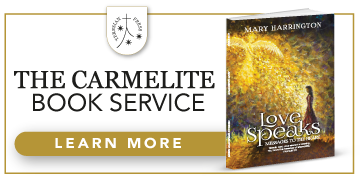Sorry, no records were found. Please adjust your search criteria and try again.
Sorry, unable to load the Maps API.
I have to confess I wasn’t expecting to spend a full afternoon inside Girona cathedral with my 14 year old son but, while staying in the Catalonian city last week, I had promised to take him to see the famous cathedral steps. The imposing 90 step climb is considered the longest Barque staircase in the world, and was commissioned by Severo Tomás Auter, Bishop of Girona, between 1685-1699. It seems that during his own ceremony of ordination he had such a hard time climbing the original badly deteriorated steps that he decided a grand replacement was needed. The guidebooks tell you to look closely at the steps, as the stone is full of tiny shell fossils called nummulites. Today no-one’s much interested in that, rather the tourists come in their droves to see what was one of the central locations in the iconic TV series Game of Thrones.
As I ascended the 90 steps in 35 degrees of heat my son told me how in Game of Thrones the magnificent building we were approaching was The Great Sept of Baelor, the centre of religious worship for the Faith of the Seven and the seat of the High Septon of the Faith. Located in King’s Landing, the capital of the Seven Kingdoms, (and featured heavily in Season Six, episodes 6 and 10) it was the largest single building in the city, and great religious ceremonies were held there. It was called the Sept of Baelor after King Baelor I Targaryen, a king noted for his religious piety and pacifism.
In response to this I was able to throw in that during filming the Bishopric of Girona was were worried there’d be nudes in front of their Cathedral for the filming, but they were reassured it wouldn’t happen! also, the sculptures of the façade were covered to eliminate religious references and – with the help of GCI and a chroma screen – they made a sea appear in front of it when in reality, it’s about one hour drive from the city.

My son added that in one scene the character Jamie Lannister (played by Holywood star Nikolaj Coster-Waldau) charges up the steps on a horse, and yes they actually trained a real horse to do that!
I have to confess I know little or nothing about Game of Thrones, but I’ve always had a preoccupation with the interface between modern mass entertainment and ancient themes of spirituality and religious piety, however subliminally they manifest themselves. In this present turbulent age it’s easy to think that the world has turned its back on God, but I retain a profound belief in the intrinsic spirituality of the human person – it may manifest itself in varied and oftimes curious forms but the quest for ‘something greater than the Self’ is imprinted onto our most ancient DNA. It is in many ways the essence of what makes us human.
As we sat to catch our breath in the blazing Catalonian sun, I watched the procession of visitors as they emerged from the shaded alley to stop and admire the great staircase rising to the imposing, white stone cathedral. Selfies and photo-ops on the lower steps revealed the Game of Thrones pilgrims, but most did make the tough ascent, and duly paid their entrance fee – perhaps it was worth the 15 euros to get out of the searing heat, or perhaps they thought they were about to explore the The Great Sept of Baelor, but one way or another they had climbed to the heavens and were within Girona’s magnificent cathedral.
In return for his knowledgeable commentary on Game of Thrones, I found myself suddenly able to tell my son about my particular preoccupations, as the interior of Girona cathedral is seeped in the history and metaphysics of the European Catholic Church.
Known as the Cathedral of Saint Mary of Girona, it is the seat of the Roman Catholic Diocese of Girona, and its interior includes the widest Gothic nave in the world, with a width of 23 metres (75 ft). Its history dates back to antiquity, as it’s first incarnation was almost certainly built atop of the Roman citadel in the original Iberian settlement of Gerunda. Then came the Visigoths, the Moors, Charlemange and finally the Aragonian dynasty before the building that survives today was constructed.
Being an incredibly large vaulted structure, most of the iconography of Girona Cathedral comprises highly elaborate side chapels, each reflecting a significant Catholic devotion or historical personage – The Immaculate Conception, the Nativity, the Doctor Saints, Corpus Christi, St Michael, St, George, St Francis Xavier, Mary Magdelene. The floor of the cathedral is dense with memorial stones – to previous senior clerics, notaries and even the occasional Templar knight.

Some of today’s visitors choose to walk the cathedral with the free audio gadget provided. We tried one but the brief, carefully worded narratives conveyed little of the significance or importance of what’s being viewed. Several tour guides were attracting random visitors, drawn in by their whispered tales of saints, warriors and the turbulent history of Catholic Spain.
Seen through the glass of today’s moral and social preoccupations the progress of our Church through time is littered with episodes best forgotten, but far more to be remembered and celebrated. In some Catholic circles such historical inheritances have been denigrated, especially when they have a predominantly cultural rather than historical basis – for instance the subtlety and instructional significance of legend is often ignored or dismissed.

At various places in Girona cathedral you encounter the Cross of St George, and one chapel in particular is dedicated to this great saint, who is not only the patron saint of England, but of Bulgaria, Ethiopia, Greece, Georgia, Portugal, Romania, Syria, Lebanon, Catalonia, Alcoi, Aragon, and Rio de Janeiro.
In Catalonia La Diada de Sant Jordi is celebrated every year on 23rd April. El Dia de la Rosa (The Day of the Rose), or El Dia del Llibre (The Day of the Book), as the day is also known, sees sweethearts, loved ones and colleagues exchanging gifts – men give women roses, and women give men books, which to me at least seems like all is still well with the world!
Such has been the popularity of this tradition that in 1995 Unesco adopted St George’s Day as World Book Day.
Of course, as I explained to my son, St George is also supposed to have slain a dragon, but that’s highly unlikely and falls heavily into the category of popular culture and Catholic mythology. But important lessons can be learnt from such stories. As the Catholic writer G.K. Chesterton once pointed out: “Fairy tales do not tell children the dragons exist. Children already know that dragons exist. Fairy tales tell children the dragons can be killed.”
My own spiritual upbringing was populated and built by such stories of saints and heroic actions, some of which had little basis in fact, but carried the theology that was to shape my life. I still cherish my battered copy of Emily May Shapcote’s eloquently titled 1887 book Legends of the Blessed Sacrament Gathered from the History of the Church and the Lives of the Saints which my mother gifted me when I was less than 10 years old. It had been given to her as a child by the nuns at the Convent of Our Lady of Victories in Putney. As a child I probably didn’t read the text that much but colouring in the elaborate engravings brought me into close communion with the author’s subjects, and in turn my Catholic heritage.
As the modern Church navigates its way through its current preoccupation with the analysis and revision of the concept of synodality, we are already seeing new forms – or rather expressions – of evangelisation emerging. Pope Francis seems particularly keen on developing a more democratic or parliamentary way of governing the Church, and this in turn is already starting to impact on both how we perceive ourselves as Catholics, and the mechanisms we are developing to transmit the faith, and evangelise to the broader human community. Unfortunately, synodality remains a dangerously vague and theologically unclassified word, which could easily see the immense richness in the diversity of Charisms in the Church flattened into a restrictive and narrow interaction with both our fellow Catholics, and the world at large.
A fundamental strength of Catholicism has been that it functions like a mountain with many paths to its summit, and the body of the Church needs a diversity of approaches in which we can all “walk together” and “everyone is a protagonist”, as Pope Francis has said of the synodal process. It is a common adage that “you cannot know who you are unless you know where you’ve come from”, and this certainly ought to apply to the Catholic faith. History, mythology and popular religious culture are the ways in which many Catholics continue to express, practice and pass on their Catholic faith. It’s a mechanism as valid as any other, and needs to be an intrinsic component of the synodal process.
Wandering around Girona cathedral talking Catholic history with my son I’m sure he absorbed far more of the iconography and legends than he did my theology, but I’m hoping it’s a day he’ll choose to remember (as I always will), and carry with him just a few grains of the deeper Catholic meanings his father sought to teach him. If so, Deo Gratias, my job is done.
Joseph Kelly is a Catholic writer and theologian




























